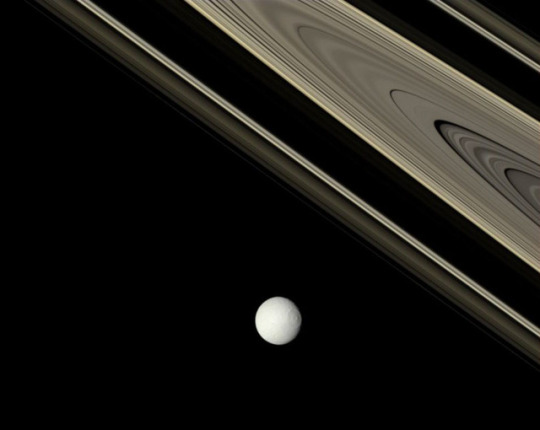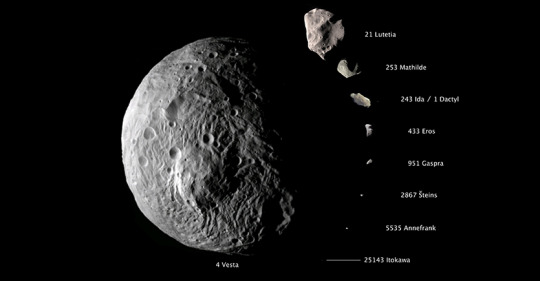Text
undefined
youtube
Quando osservate il cielo notturno può capitare di veder un puntino luminosissimo e di pensare: "caspita che stella brillante!!!". In realtà è possibile che quel puntino sia un pianeta. La maggior parte dei pianeti del nostro sistema solare sono visibili tranquillamente ad occhio nudo e in questo breve video vediamo come distinguerli dalle stelle grazie alla loro luce. Cieli sereni!!!
5 notes
·
View notes
Text
undefined
youtube
Oramai siamo sommersi di notizie su internet ed è diventato sempre piu' difficile capire quali sono gli avvenimenti veri e quali le "bufale". Anche in ambito astronomico si sono presentati dei casi di false informazioni. In questo video vediamo una famosa bufala che ha coinvolto la nostra Luna. Cieli sereni!!!
1 note
·
View note
Text
undefined
youtube
Tentare di comunicare con gli alieni non avviene soltanto nei film. Alcuni tentativi sono stati fatti, per farci conoscere ed individuare dagli extraterrestri. Al momento non siamo ancora stati visitati da qualche esotica civiltà dell'universo (forse!!!) ma grazie ad alcuni messaggi inviati nello spazio, non ci resta che aspettare. In questo video vediamo il primo famoso tentativo di entrare in comunicazione con altri mondi. Cieli sereni!!!
0 notes
Text
undefined
youtube
Per farci trovare dagli extraterrestri non abbiamo solo inviato nello spazio degli oggetti che ci descrivono e indicano la nostra posizione ma anche altre forme di comunicazione che permetteranno agli alieni di venire a farci un saluto. Vediamone un esempio in questo video. Cieli sereni!!!
0 notes
Text
undefined
youtube
Abbiamo invito nello spazio delle comunicazioni agli extraterrestri, che indicano come siamo e come trovarci ma nel 1977 abbiamo mandato un messaggio cercando di spiegare un po' della nostra cultura e del nostro senso artistico. In questo breve video, che conclude la "trilogia dei messaggi nello spazio", vediamo una rapida descrizione di questa missione. Cieli sereni!!!
0 notes
Text
undefined
youtube
Tra i corpi celesti più "estremi" dell'universo ci sono i quasar. Sono oggetti che producono un'energia impressionante anche se, osservati al telescopio, sembrano degli innocui "puntini luminosi". Scopriamo cosa sono in questo breve video. Cieli sereni!!!
0 notes
Text
undefined
youtube
Cadere in un buco nero potrebbe essere un'esperienza un po' diversa rispetto a cosa ci hanno abituato i film di fantascienza, come incontrare mondi alieni o viaggiare in zone remote dell'universo. Anche se per ora si puo' solo teorizzare questa esperienza, qualche idea c'è. Vediamone una insieme. Cieli sereni!!!
6 notes
·
View notes
Photo

Apollo 11 astronaut Neil Armstrong loads rocks into the lunar module, as painted by Apollo 12 moonwalker Alan Bean in 1985.
151 notes
·
View notes
Photo

Saturn: Bright Tethys and Ancient Rings
Image Credit: Cassini Imaging Team, SSI, JPL, ESA, NASA
1K notes
·
View notes
Text
undefined
youtube
SPECCHI SULLA LUNA. Durante le missioni lunari sono stati lasciati degli specchi sul nostro satellite. In questo video diamo una rapida descrizione di queste missioni e del perché questi specchi siano ancora molto importanti. Cieli sereni!!!
#specchi sulla luna#luna#moon#specchi#terra#specchi della luna#earth#distanza della luna#lunar laser ranging#lunokhod#apollo#apollo mission#astronomia#astrofili
0 notes
Text
SCONTRO TRA GALASSIE. Nonostante nello spazio lo "spazio" sia moltissimo, può capitare che due galassie si scontrino. Anche la Via Lattea seguirà questo destino. In questo video vediamo come è quando succederà. Cieli sereni!!!
0 notes
Text
It’s International Asteroid Day!
There are more than 700,000 known asteroids, but how much do you know about these rocky remnants left over from the birth of our solar system 4.6 billion years ago?

Today, June 30 is International Asteroid Day. Here are some things to know about our fascinating space rubble.
1. A Place in Space
Asteroids—named by British astronomer William Herschel from the Greek expression meaning “star-like"—are rocky, airless worlds that are too small to be called planets. But what they might lack in size they certainly make up for in number: An estimated 1.1 to 1.9 million asteroids larger than 1 kilometer are in the Main Belt between the orbits of Mars and Jupiter. And there are millions more that are smaller in size. Asteroids range in size from Vesta—the largest at about 329 miles (529 kilometers) wide—to bodies that are just a few feet across.

2. What Lies Beneath
Asteroids are generally categorized into three types: carbon-rich, silicate, or metallic, or some combination of the three. Why the different types? It all comes down to how far from the sun they formed. Some experienced high temperatures and partly melted, with iron sinking to the center and volcanic lava forced to the surface. The asteroid Vesta is one example we know of today.
3. Small Overall
If all of the asteroids were combined into a ball, they would still be much smaller than the Earth’s moon.
4. Except for a Big One
In 1801, Giuseppe Piazzi discovered the first and then-largest asteroid, Ceres, orbiting between Mars and Jupiter. Ceres is so large that it encompasses about one-fourth of the estimated total mass of all the asteroids in the asteroid belt. In 2006, its classification changed from asteroid to as a dwarf planet.

5. Mission to a Metal World
NASA’s Psyche mission will launch in 2022 to explore an all-metal asteroid—what could be the core of an early planet—for the very first time. And in October 2021, the Lucy mission will be the first to visit Jupiter’s swarms of Trojan asteroids.

6. Near-Earth Asteroids
The term ‘near’ in near-Earth asteroid is actually a misnomer; most of these bodies do not come close to Earth at all. By definition, a near-Earth asteroid is an asteroid that comes within 28 million miles (44 million km) of Earth’s orbit. As of June 19, 2017, there are 16,209 known near-Earth asteroids, with 1,803 classified as potentially hazardous asteroids (those that could someday pose a threat to Earth).
7. Comin’ in Hot
About once a year, a car-sized asteroid hits Earth’s atmosphere, creates an impressive fireball, and burns up before reaching the surface.
8. But We’re Keeping an Eye Out
Ground-based observatories and facilities such as Pan-STARRS, the Catalina Sky Survey, and ATLAS are constantly on the hunt to detect near-Earth asteroids. NASA also has a small infrared observatory in orbit about the Earth: NEOWISE. In addition to detecting asteroids and comets, NEOWISE also characterizes these small bodies.

9. Buddy System
Roughly one-sixth of the asteroid population have a small companion moon (some even have two moons). The first discovery of an asteroid-moon system was of asteroid Ida and its moon Dactyl in 1993.
10. Earthly Visitors

Several NASA space missions have flown to and observed asteroids. The NEAR Shoemaker mission landed on asteroid Eros in 2001 and NASA’s Dawn mission was the first mission to orbit an asteroid in 2011. In 2005, the Japanese spacecraft Hayabusa landed on asteroid Itokawa. Currently, NASA’s OSIRIS-REx is en route to a near-Earth asteroid called Bennu; it will bring a small sample back to Earth for study.
Make sure to follow us on Tumblr for your regular dose of space: http://nasa.tumblr.com
2K notes
·
View notes
Text
undefined
youtube
L'ANNO LUCE. Per descrivere la distanza dei corpi celesti molto spesso viene utilizzato l'anno luce. Diamo una rapida descrizione di quella che forse è l'unità di misura maggiormente impiegata in astronomia. Cieli sereni!!!
0 notes
Photo

Illustrazione con un gatto spaziale per una scatola di fiammiferi
72 notes
·
View notes
Text
undefined
youtube
Scopriamo perché gli astronauti nello spazio galleggiano.
0 notes
Text
undefined
youtube
LA STELLA POLARE. Nella pillola di oggi, rapida descrizione di cosa rappresenta la stella polare. Cieli sereni a tutti!!!
0 notes
